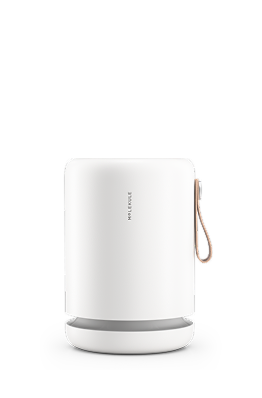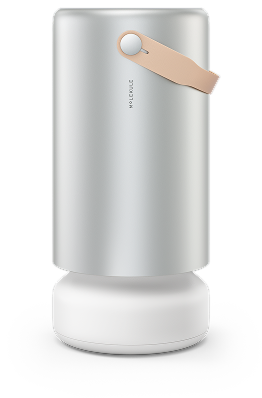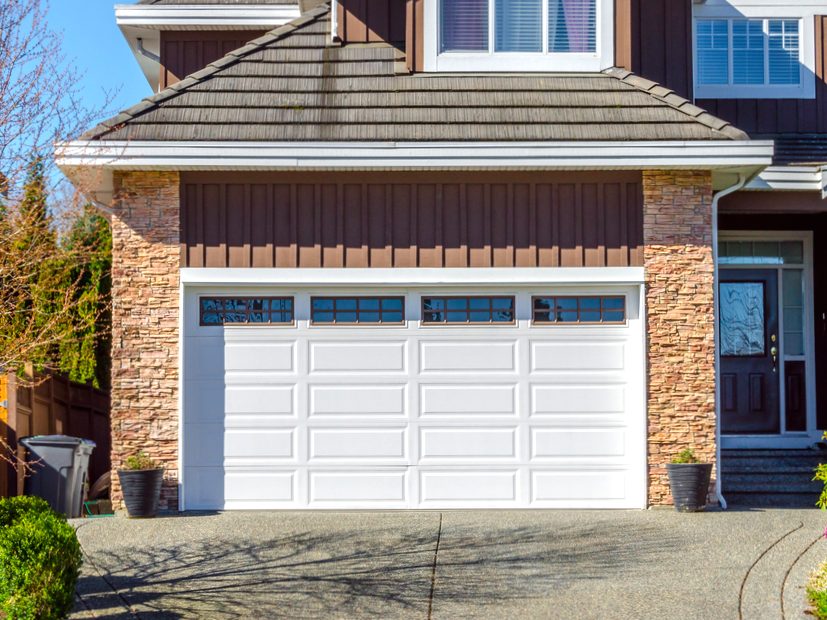It is a gorgeous summer day, the perfect time to head out to your garage and get some work done. You roll open the door, ready to polish the trim on your classic car, re-pot some houseplants, or do some woodworking at your work bench. But as you step inside, you are blasted with a wave of stifling hot air. Even with a fan running, it is just too hot to work. How can you use your garage as a workspace without suffering heat stroke? One solution could be to use a garage air conditioner.
Why use a garage air conditioner?
There are plenty of reasons you might want to keep your garage cooler. If you store an old car, or materials like lumber or paint, intense summer heat can seriously degrade them over time. If you want to use your garage as a workshop, gym, or game room, a roasting hot area is not exactly inviting. But keeping your garage cool is not as easy as popping a window unit into a spare bedroom. Garage cooling comes with its own set of challenges and potential problems.
Garage cooling pitfalls
Never use your home’s central AC
The first thing you need to know about cooling your garage with air conditioning is to never use your home’s central air conditioning to cool the garage (assuming you have an attached garage). The fumes from running engines and chemicals kept in storage, like gasoline, paint, solvents, pesticides, and other toxins could get siphoned into the ductwork and spread into your house.
A simple ductwork extension out to the garage might seem like a cheap and easy fix, but it is a seriously bad idea and almost certainly violates the housing inspector’s code. Not to mention that the large volume of air that needs to be cooled in a garage will put a massive strain on your central air system, stressing it well beyond what it was designed for.
The problem of volume
Let us talk about that huge volume of air in your garage. For one thing, a garage is probably a larger space than any single room in your house. Also, very few garages have finished ceilings, so the volume of air includes all the space in the rafters, right to the roof itself. That might be adding as much as fifty percent of the total air volume compared to a room of similar size.
Lack of insulation
Worse, garages are not insulated, and without insulation, it is almost impossible to keep them cool even with the most powerful air conditioners. Before you try to air condition your garage, you will need to put in insulation on the walls, the door and the ceiling (or, ideally, put in a dropped ceiling and insulate that, cutting down the total volume of air you will be cooling).
What kind of air conditioner should you use in your garage?
Portable air conditioner – A portable air conditioner is really a last resort for a room that has no other way of being cooled. They are less efficient and less effective than other types of air conditioners.
To be at all effective, a portable unit needs a vent to the outside. HVAC professionals universally agree: a portable AC technically could be used in a garage, but it will work poorly and you will be disappointed with the results.
Window air conditioner – Your standard window AC unit is a good choice for most garages. Chances are, your garage has a window, making this an easy installation. If not, the unfinished walls of most garages make a through-the-wall installation relatively painless. Window AC units are cheap and effective.
Be aware that the added air volume of a garage could mean you will need to buy an AC unit with a higher BTU rating than might be necessary for a space of similar size inside the house.
Ductless “mini-split” air conditioner – These AC units are a lot like the main AC on your house but on a much smaller scale. There is a main heat exchanger positioned outside the garage, then lines are run through the wall to carry cold fluid which chills the air within a small output unit (or even multiple units). The through-the-wall cut can be just a few inches in size, and the output unit can be positioned wherever it is most effective. These units are probably the ultimate garage cooling method in terms of effectiveness and versatility, but the initial cost is significantly higher than a window unit.
Exhaust fan – If your garage is heating up because the sun beats down on it, but the outside air is a reasonably comfortable, the cheapest way to make your garage space livable is with a powerful exhaust fan. These can be installed in a window or permanently installed through the wall. The fan will suck the hot air out of the garage, letting cooler air from outside come in through the open door or a window. This has the added benefit of clearing any fumes in the garage, like the exhaust from a running car or any paints, varnishes or solvents you might be using.
Just be careful if you are using spray paint in your garage—a strong exhaust fan will definitely send a cloud of paint into the air, which could cause problems if there are any structures or plants nearby that you would rather not apply a fine coating of paint to. Obviously, there are going to be hot, humid days where a simple exhaust fan will not accomplish much cooling in your garage, but depending on the climate where you live, this can be a very cost-effective option.
The problem of indoor air pollution in the garage
A garage is a special case when it comes to air pollution. In addition to all the air pollutants you might find in a home (dust, bacteria, smoke, airborne chemicals), garages can produce especially intense and dangerous air pollutants.
Harmful airborne chemicals
Airborne chemicals, which are part of the family of volatile organic compounds (VOCs), may be especially harmful. VOCs may come from car exhaust, or be given off by containers of gasoline, motor oil, paint, pesticides and other chemicals you store in the garage.
Particle pollution
If the garage is used as a workshop, add copious amounts of wood dust, metal shavings, or paint dust to the mix. These types of pollutants require a robust mechanical filtration system. Even though you do not sleep in your garage, you want the air to be clean.
Importance of ventilation
The first step toward clearing the air in your garage should be ventilation and “turnover”—that is, replacing dirty air with fresh air from outside. An air conditioner will accomplish this only to a limited degree. An exhaust fan will work much better. A mechanical filter on an exhaust fan can remove dust particles from the air (though filters should be replaced regularly). Add an air purifier into the mix, and you can really help keep your garage air clean.
Using an air purifier inside your garage
After making sure to well ventilate your garage, you may consider an air purifier, especially if you spend a lot of time there. The type of air purifier best for your garage depends on how you use it. However, given the amount of VOCs produced in a typical garage, a carbon filter is going to quickly become saturated and need to be replaced. Ventilation and air turnover is a better way to deal with VOCs in your garage.
Mechanical air filtration
A mechanical filter, such as a HEPA filter, may help remove dust particles. However, HEPA filters are only designed to remove particles of a certain size. They cannot remove VOCs from the air, as volatile organic compounds are gases–too small to be trapped on a filter surface.
On hobbyist message boards, quite a few people talk about using simple box fans with mechanical filters mounted to them with homemade frames. They recommend placing the fan in the middle of the garage, and—as the fan absorbs air through it—dust gets trapped in the filters. You might have to replace these filters fairly often.
Air conditioners also incorporate mechanical filters, but, again, it probably will not be sufficient for the pollutants in a garage. Again, mechanical filtration cannot remove VOCs and so other measures like those mentioned above should be taken to reduce exposure to these harmful airborne chemicals.
Combined types of air filtration
Different types of air purifiers contain one type or some combination of air purification technology, including carbon filtration and HEPA filters. A newer technology—Photo Electrochemical Oxidation (PECO)—is designed to destroy VOCs at the molecular level (as well as other biologic contaminants like bacteria, mold and viruses). This is the technology inside the Molekule air purifier, which also has a mechanical filtration phase.
When considering a garage air conditioner unit
It is important to remember that the large air volume and often intense concentrations of pollutants in a typical garage can be hard on an air purifier. At the very least, you will need to replace filters more frequently.
Air conditioning a garage can be a challenge and, in many cases, is not the best possible option. But for garages used as a regular workspace or converted into usable living space, choosing the right type of air conditioner, combined with proper insulation and a good air purification system, will keep the air cool and clean.







